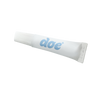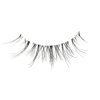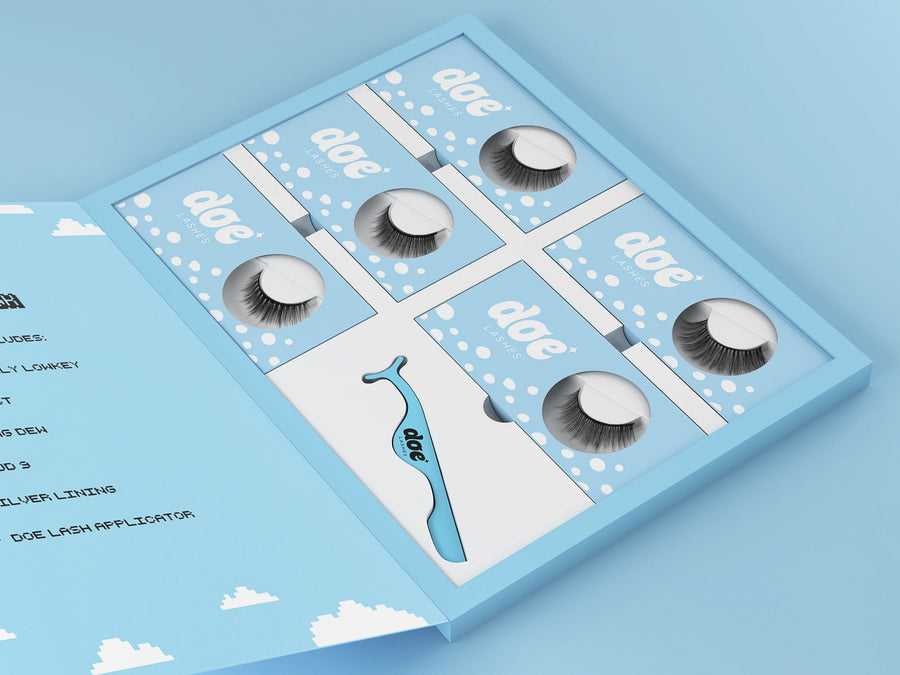We love falsies for the fabulous, fluttery effect they give our eyes, but have you ever wondered who invented the magnificent concept of fake eyelashes? We have, so we did some investigating and discovered some answers.
What Are Fake Eyelashes?
Fake eyelashes are designed with tiny hair-like fibers of silk, mink, or synthetic fibers. These fibers are sewn onto a lash band to create fake lashes. Glue or magnetic liner (for magnetic lashes only) adheres the lashes to your upper lash line to give the appearance of long, voluminous lashes. Fake eyelashes wear well all day and require cleaning after each use. Most higher-quality fake eyelashes are reusable as long as they remain clean and properly stored.
Fake Eyelashes Through the Years
False eyelashes date back to 3500 B.C. when Ancient Egyptians used ointments and brushes to create dark, voluminous lash styles. Both men and women accentuated their lashes by darkening them with malachite during this time.
Then, later down the line around 753 B.C., the Romans longed for long lashes, so lash enhancements using burnt cork and coal became famous for achieving a glamorous look. Elaborate lashes went in and out of style as time went on, making a definite splash again in the 19th century.
19th Century
In the mid-1800s, Eugene Rimmel, Queen Victoria’s perfumer, invented the first mascara made from petroleum jelly and coal dust. This invention paved the way for the creation of fake eyelashes. Parisian women soon began sewing hairs onto their eyelids (ouch!) in 1882, followed in 1889 by transplanting hairs on their eyelids.
The Fake Eyelash Patent in 1911
The first strip lashes were patented in 1911 by Canadian woman Anna Taylor. These lashes were a glue-on version made with human hair. These false lashes became increasingly popular, so German hairdresser Karl Nessler (known for his permanent waves) began providing lash services in his New York City salon.
Then, in 1916 a wig-maker was hired to create false lashes for actress Seena Owens during the filming of the movie Intolerance. The wig-maker weaved human hair into gauze and glued it onto the actress’ lash line. Seena Owens’ appearance on-screen made artificial eyelashes so famous that magazine advertisements in the 1920s and 1930s featured women with gaudy, fluttery false lashes. The bigger the lashes, the better!
In the 1950s and 1960s, plastics were used to create synthetic lashes. Fierce, dramatic eyelashes were on the eyes of women everywhere, including starlets. In the 1960s, doll-eyed model Twiggy was the false lash icon, inspiring women everywhere to flaunt falsies.
Fake eyelashes again went in and out of style after the 1960s, with celebs like Cher and Madonna making them popular again in the 1980s. Lash extensions became popular in the 1990s, with celebrities such as Kim Kardashian and Jennifer Lopez flaunting the lash trend into today. Lash extensions and strip lashes grace the eyes of celebrities everywhere today.
Fake Lashes Today
Today, many types of tiny fibers make up false lashes. Animal hairs such as mink, synthetic, and silk fibers create many of the fake eyelash sets you see today. They are typically lightweight and more accessible to apply than the lashes in the past. In 2014, magnetic lashes made their debut. Magnetic lashes adhere to the lash line with tiny magnets and a magnetic liner.
This lash method is one that many people find more manageable than the glue-on lash type. Fake lashes continue to be one of the most popular cosmetics in the beauty industry today.
To Sum It Up
Fake eyelashes have come a long way since the days of the Ancient Egyptians. History tells us that some people want their lashes to look longer, darker, and more voluminous regardless of the period. Whether you want to try glue-on lashes or magnetic lashes, Doe has them both.
Our lashes consist of Korean silk and a soft, cotton band. They’re lightweight and feel fabulously natural when you flaunt them. Wearing fake lashes today is easier than ever, with various choice styles and lash materials. You don’t have to sacrifice pain for beauty these days, because fake lashes are just one blink away.
Sources:


